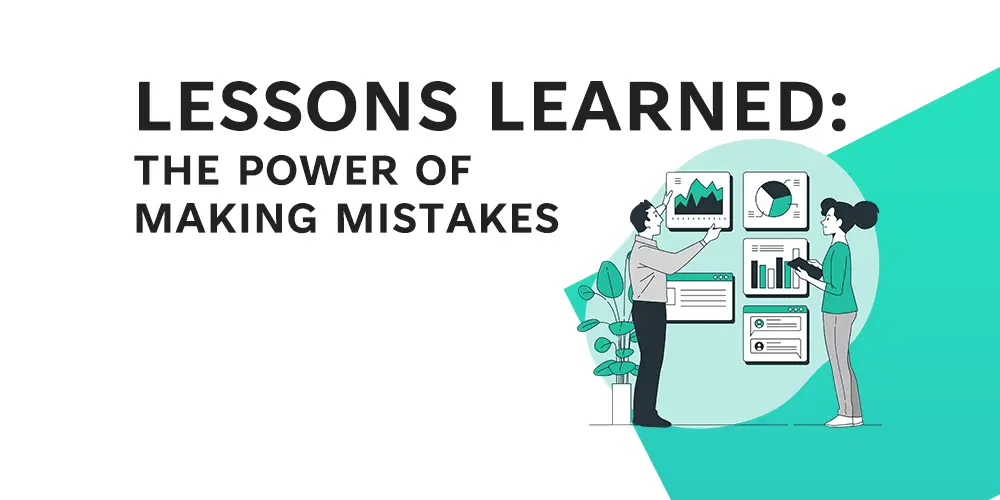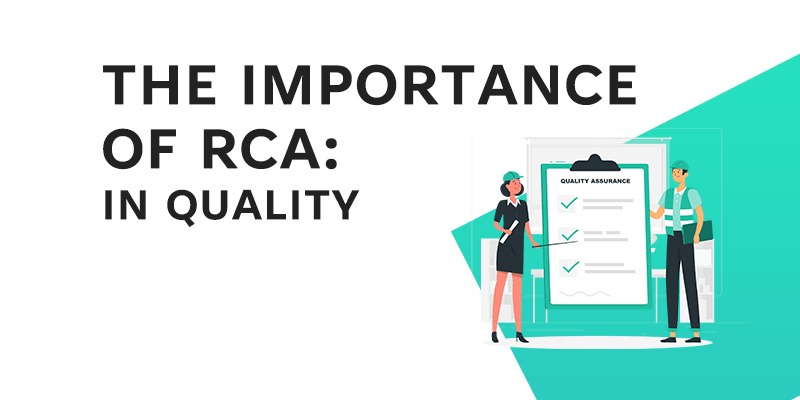Making mistakes is an unavoidable part of doing business. No matter how skilled or experienced a business leader or entrepreneur is, setbacks and failures are unavoidable along the way. While mistakes can be frustrating and even costly in the short term, they can also provide valuable opportunities for learning and growth in the long run. In fact, some of the most successful businesses have grown stronger as a result of their mistakes, viewing them as opportunities to improve their strategies, practices, and overall business approach. In this post, we will look at the power of mistakes and the lessons that can be drawn from failure in business.
We’ll discuss the importance of embracing failure and reframing it as a necessary part of the business learning process, with real-life examples of business mistakes and strategies for effective learning from them. This post will provide insights and inspiration for turning mistakes into opportunities for growth and development, whether you’re a seasoned business leader or just starting out on your entrepreneurial journey.
Click out our Free to download Lessons Learned Template
Table of Contents
Real-life Examples of lessons Learned
In this section of the blog, we’ll look at real-life examples of business mistakes that resulted in valuable lessons learned, as well as examples of successful companies that recovered from mistakes and emerged stronger as a result.
The introduction of the Ford Edsel in 1957 is one example of a business blunder that resulted in valuable lessons learned. The Edsel was a much-anticipated car that was marketed as a revolutionary new model, but it ultimately failed to meet expectations, with sales falling far short of expectations. Rather than abandoning the project entirely, Ford learned from their mistakes and applied what they learned to improve their marketing and product development strategies. They also applied what they had learned to create more successful models in the future.
Another example is the 1985 release of the New Coke. The following are the results of the study. Rather than stubbornly sticking with the new formula, Coca-Cola quickly recognised their error and reintroduced the original formula as “Coca-Cola Classic.” This move not only helped to repair the brand’s reputation, but it also taught the company the importance of listening to customer feedback and remaining true to their brand identity.
These examples demonstrate how mistakes in business can provide valuable opportunities for learning and growth. Companies can emerge stronger and more resilient than before by analysing the root causes of their mistakes and taking steps to address them. In fact, some of the most successful companies have used their mistakes to improve their business strategies and practises, and as a result, they have come out ahead.
Strategies for Learning Lessons from Mistakes
In this section of the blog post, we’ll look at how to learn from business mistakes effectively, as well as how to conduct a post-mortem analysis to identify areas for improvement and how to apply lessons learned from mistakes to future business decisions.
A post-mortem analysis is an important strategy for learning from business mistakes. This entails thoroughly investigating the root causes of the error, analysing the decision-making process, and identifying areas where improvements can be made. Businesses can gain a better understanding of what went wrong and develop strategies to avoid similar mistakes in the future by conducting a post-mortem analysis.
Another important strategy is to foster an accountability culture within the organisation. This entails encouraging team members to accept responsibility for their errors and see them as opportunities for learning and growth. Businesses can foster a more innovative and resilient culture by fostering a culture in which mistakes are not punished but rather used as opportunities for improvement.
Furthermore, businesses can use technology and data analytics to identify areas for improvement. Analyzing customer data and feedback, for example, can provide insights into areas where the company falls short and help identify areas for improvement. Similarly, tracking key performance indicators (KPIs) with data can help businesses identify trends and patterns that may indicate areas for improvement.
Finally, businesses must apply the lessons learned from mistakes to future business decisions. This entails applying the findings of the post-mortem analysis to future business strategies and practises. For example, if a mistake was made as a result of poor communication among team members, the company may implement new communication strategies to avoid similar errors in the future. Businesses can improve their overall performance and achieve long-term success by applying the lessons learned from mistakes to future decisions.
In conclusion, learning from mistakes is an essential part of the business process. Businesses can emerge stronger and more resilient than ever before by implementing strategies for effectively learning from mistakes, conducting post-mortem analyses, creating a culture of accountability, utilising technology and data analytics, and applying lessons learned to future decisions.
Embracing Failure to Learn Lessons in Business
In this section of the blog post, we’ll discuss why it’s important for businesses to embrace failure as part of the learning process, provide tips for reframing failures as opportunities for growth and development, and provide examples of successful companies that have embraced and leveraged failure.
First and foremost, businesses must recognise that failure is an inevitable part of the learning process. In fact, some of the world’s most successful businesses have grown through trial and error. When businesses accept failure as a natural part of the process, they foster a culture of innovation and risk-taking, which can lead to breakthroughs and new ideas.
Adopting a growth mindset is one way to reframe failures as opportunities for growth and development. This entails viewing failures as opportunities for learning and improvement rather than as a reflection of one’s abilities or intelligence. Businesses that adopt a growth mindset are better able to recover from setbacks and use their experiences to inform future decisions.
Another approach to embracing failure is to experiment frequently and fail quickly. The term “audience” refers to the number of people who listen to what others have to say about them. Businesses that fail quickly can learn what works and what doesn’t and adjust their strategies accordingly. This can assist them in staying ahead of the competition and remaining competitive in a rapidly changing marketplace.
Finally, successful companies that have embraced failure and used it to their advantage should be studied. Amazon founder Jeff Bezos, for example, famously stated, “If you’re not failing, you’re not innovating.” Amazon has introduced a number of unsuccessful products and initiatives, but it has also introduced successful ones, such as Amazon Web Services and the Kindle e-reader. Similarly, through its “20% time” programme, which allows employees to spend 20% of their workweek on projects outside of their normal job responsibilities, Google encourages its employees to take risks and fail quickly.
To summarise, accepting failure is an important part of the business learning process. Businesses can create a culture that encourages innovation and risk-taking by adopting a growth mindset, experimenting frequently, failing quickly, and looking to successful companies that have embraced failure. Finally, businesses that accept failure as a necessary part of the learning process are better positioned to stay ahead of the competition and achieve long-term success.
Overcoming Fear of Failure in Business
This section of the blog post will discuss why fear of failure can be a barrier to learning from business mistakes, provide tips for overcoming fear of failure and taking calculated risks in business, and provide strategies for reframing failure as a natural and necessary part of the business learning process.
Because it prevents business owners and employees from taking calculated risks and trying new things, fear of failure can be a significant barrier to learning from business mistakes. Businesses that are fearful of failure are less likely to innovate and adapt to changing market conditions. This can result in lost opportunities and stagnation.
One method for overcoming failure fear is to reframe failure as a necessary part of the learning process. Businesses are more likely to take calculated risks and try new things when they view failure as an opportunity to learn and grow. It’s important to remember that many successful businesses failed before becoming successful. There is no escaping the fact that the world is changing.
Another method for overcoming failure fear is to divide large goals into smaller, more manageable tasks. Businesses that divide their goals into smaller tasks may find it easier to take calculated risks and try new things without feeling overwhelmed. Businesses can gain momentum and confidence over time by taking small steps towards a larger goal.
It is also critical for businesses to foster a culture that encourages calculated risks and experimentation. Employees are more likely to feel comfortable trying new things and taking calculated risks when businesses foster an environment that encourages innovation and risk-taking. This can lead to breakthroughs and new ideas that can help the company stay ahead of the competition.
Finally, by celebrating and learning from their successes and failures, businesses can overcome their fear of failure. Businesses that take the time to celebrate their successes and learn from their failures foster a culture of learning and growth. This can help reduce employee fear of failure and encourage them to take calculated risks and try new things.
In conclusion, the fear of failure can be a significant impediment to learning from business mistakes. Businesses, on the other hand, can overcome this fear by reframe failure as a necessary part of the learning process, breaking down large goals into smaller tasks, creating a culture that encourages risk-taking and innovation, and celebrating and learning from successes and failures. The following are the results of a search for a new job.
Conclusion
In conclusion, mistakes are an inevitable part of running a business. They can, however, be valuable opportunities for growth and learning. Businesses can improve their strategies, practises, and decision-making processes by embracing failure and learning from mistakes. Real-world examples of business mistakes show that even the most successful companies make mistakes, but it is how they recover from them that distinguishes them. Conducting a post-mortem analysis and applying lessons learned to future business decisions are two strategies for effectively learning from business mistakes.
To overcome the fear of failure, businesses can reframe failure as a natural and necessary part of the learning process, divide large goals into smaller tasks, foster a culture of risk-taking and innovation, and celebrate and learn from successes and failures. Accepting failure and learning from mistakes can lead to better business practises, increased innovation, and greater success in the long run.
Don’t be discouraged the next time your company makes a mistake. Instead, use it as an opportunity to learn and grow. You can position your company for long-term success in an ever-changing market by doing so. Remember that the power of mistakes lies in our ability to learn from them and apply what we’ve learned to build a better future.








